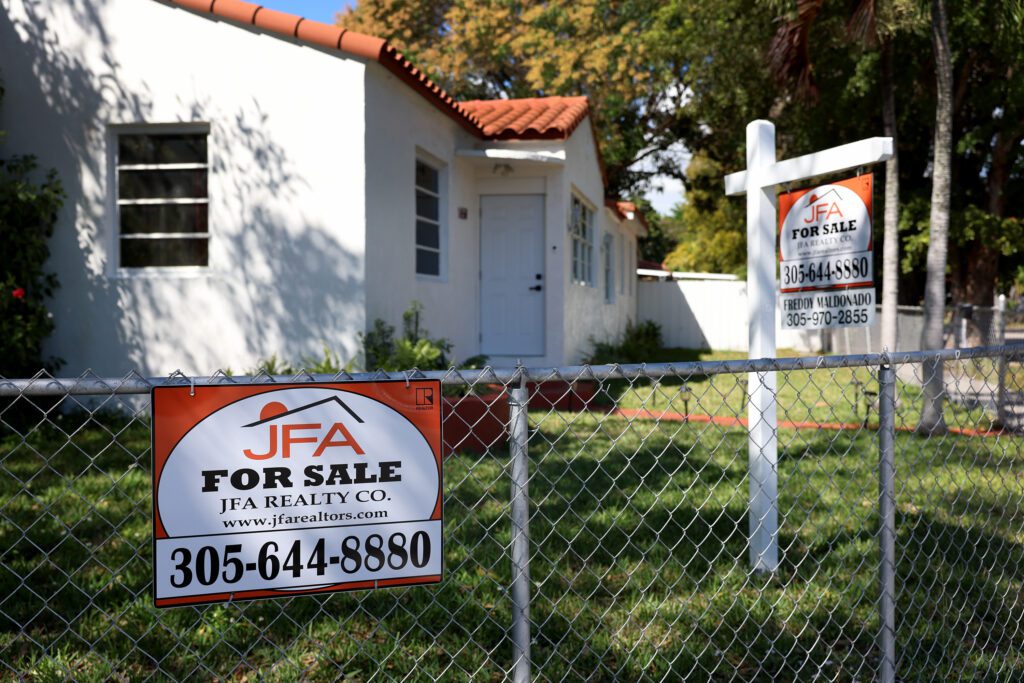Florida Housing Market Faces Significant Challenges as Prices Cool in Six Key Metro Areas
The Florida real estate market is experiencing a noticeable downturn as housing inventory surges and sales plateau. A recent report by Parcl Labs reveals that six major metropolitan areas in Florida are confronting rapidly declining home prices, signaling a shift from the pandemic-fueled housing boom to a buyer-favored market.
Florida’s "Bearish" Housing Markets: Orlando, Tampa, Cape Coral, Lakeland, North Port, and Deltona
Among the eight Florida metros analyzed by Parcl Labs, six are currently labeled as "bearish." These include:
- Orlando
- Tampa
- Cape Coral
- Lakeland
- North Port
- Deltona
These cities are witnessing significant drops in property values, driven primarily by a glut of housing supply and diminished buyer demand.
In contrast, Miami and Jacksonville remain "bullish," showing signs of steady or increasing prices.
Why Are These Markets Cooling Off?
Several key factors contribute to the current slump in these markets:
-
Oversupply of Listings:
Florida has led the nation in new home construction over recent years, aiming to meet the surge in demand during the pandemic. -
Reduced Buyer Activity:
Buyers are increasingly hesitant to enter the market due to affordability challenges amplified by rising home prices and mortgage rates. -
Economic Uncertainty:
Growing worries about the broader economy have caused potential buyers to delay or reconsider making major investments in real estate. - Slowed In-Migration:
The post-pandemic cessation of remote work and new office return mandates have slowed the influx of new residents that once fueled Florida’s housing boom.
According to a Redfin report, sellers currently outnumber buyers nationwide by nearly 500,000. Florida’s conditions now reflect this trend in an accelerated form, with home prices adjusting downward accordingly.
Market Performance Over the Past Five Years and More Recent Trends
Florida’s six bearish markets saw extraordinary growth over the last five years, with average home price appreciation at 53% — notably higher than the national average of 48%. Here’s a breakdown of five-year appreciation for these markets:
- Orlando: +53.8%
- Tampa: +60.3%
- Cape Coral: +55.6%
- Lakeland: +50.2%
- North Port: +47.8%
- Deltona: +50.7%
However, over the past year, all six markets suffered price declines averaging around 4.5%, which is significantly steeper than the national average decrease of just 0.4%. The year-over-year drops include:
- Orlando: -0.32%
- Tampa: -3.54%
- Cape Coral: -7.12%
- Lakeland: -2.66%
- North Port: -8.15%
- Deltona: -4.63%
Parcl Labs suggests these developments represent a natural market correction:
"The recent price action appears like a natural correction/consolidation, but the supply/demand picture suggests further downside ahead."
Record-Low Absorption Rates Signal Buyer Advantage
Absorption rate—a measurement of the monthly percentage of inventory sold—is a key indicator of market health. Currently, Florida’s bearish markets report absorption rates around 30%, far below their three-year average near 48%. This means that only one-third of homes listed are being sold monthly, reflecting sluggish buyer activity.
Furthermore:
- Price Cuts: Approximately 50% of listings in these areas have experienced price reductions, a 21% increase year-over-year.
- New Listings Growth: The expansion of new listings in these markets has slowed considerably, declining 20% year-over-year, compared to a 6% national drop.
For context, the national average of price cuts stands at 34%, marking a less severe adjustment relative to these Florida metros.
Opportunities for Buyers Amidst Market Challenges
Despite the current hardships for sellers, these market dynamics present unique opportunities for homebuyers:
- Negotiate Lower Prices: With many listings seeing cuts, buyers can secure properties below peak values.
- Improved Inventory Selection: The rise in listings means more options to choose from.
- Long-Term Investment Potential: Buyers entering the market now could benefit from gains when demand eventually rebounds.
Why Florida’s Market Cooling Matters to You
Florida’s housing market intricately reflects nationwide trends while demonstrating its own regional nuances. Understanding these shifts is vital whether you’re a prospective buyer, seller, or real estate investor.
For more comprehensive insights into U.S. housing market statistics and trends, visit National Association of Realtors.
Key Takeaways:
- Six major Florida metros are experiencing notable declines in home prices amid rising inventories and weaker demand.
- Orlando, Tampa, Cape Coral, Lakeland, North Port, and Deltona have seen price corrections following a period of exceptional growth.
- Current buyer-favored conditions create opportunities for those ready to navigate the evolving market.
- Market absorption rates and price-cut percentages indicate a persistent shift toward buyer advantage.
Stay informed and ahead of the market by tracking updates from real estate experts like Parcl Labs and national housing reports.

A For Sale sign displayed in front of a home in Miami, Florida, February 2023. (Credit: Joe Raedle/Getty Images)
Explore More:
- Understanding Absorption Rates in Real Estate
- How Mortgage Rates Impact Homebuyers
- Top U.S. Cities for Real Estate Investment in 2024
By staying updated on market trends and leveraging data insights, buyers and sellers can make more informed real estate decisions in Florida’s evolving housing landscape.


